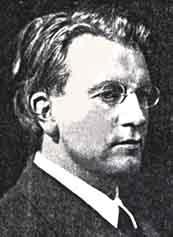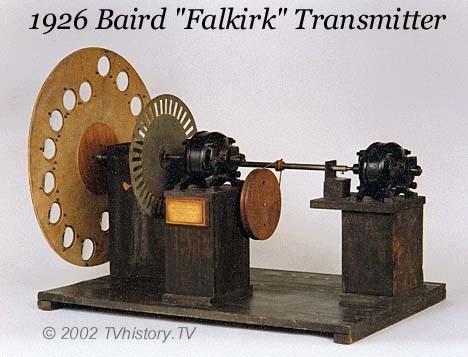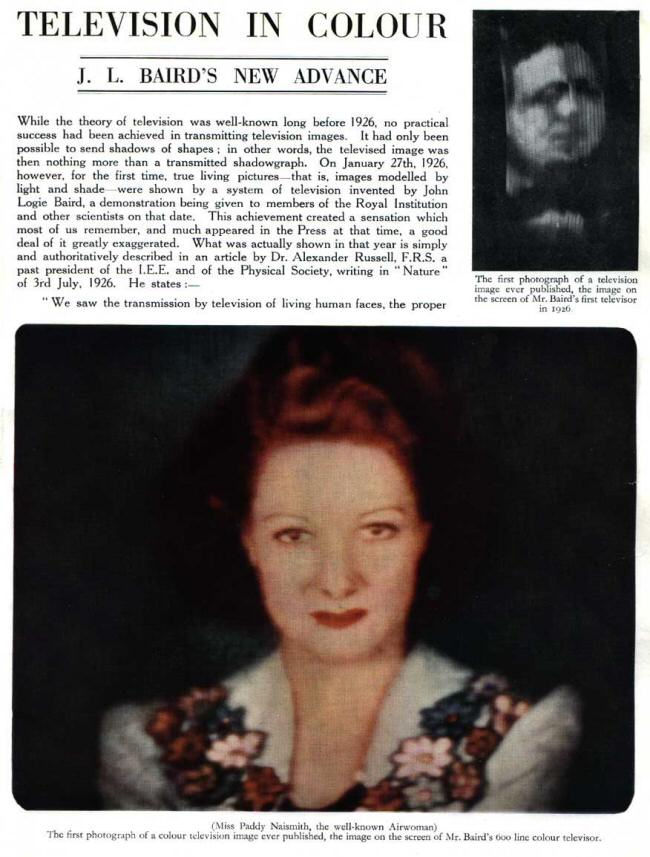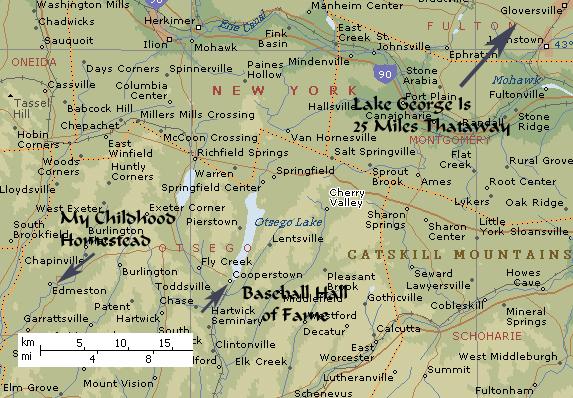Tom Swift and His Talking Pictures
or, The Greatest Invention On Record
By Victor Appleton ©1928 Book #31
Review by JP Karenko, October 2005
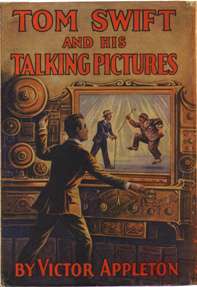 Note:
some of the language, references & attitudes, while acceptable at the time
they were written, are not Politically Correct, today.
Note:
some of the language, references & attitudes, while acceptable at the time
they were written, are not Politically Correct, today.
Summary:
No official summary was ever provided with any of the old Tom Swift books. However, without giving too much away, the plot can be summed up as follows:
There is an old saw told in Economics 101 about a fellow who owns a buggy whip factory. He hears about this new invention called "the automobile," and he wonders how it will affect his business. His financial advisor tells him "check to make sure your insurance is paid up, and have a nice fire." In a nutshell, this is the central gist of this tale of industrial sabotage, subterfuge and sly shenanigans.
Tom Swift has invented a device that seriously jeopardizes the existing theater and moving picture establishment. It is a large screen color TV with high fidelity sound. The Powers That Be are afraid folks will stay home and watch the tube instead of getting gussied up and paying them to see the latest movies, plays, operas and concerts in their theaters. They will do anything, from sabotage and subterfuge to kidnapping and attempted murder to stop this device from being marketed.
Tom survives, but how these problems are resolved, you will have to locate a hard cover copy of the book to find out.
I have been unable to find this story on line. Sorry.
![]()
Cast of Characters (More or less in order of appearance)
 Ned
Newton-Chum &
companion of Tom. His description is never given. He continues in his position
as Swifts' financial advisor and CFO (Treasurer) of Swift Construction
Company (SCC). In this tale, he continues residing at the Swift manse.
Ned
Newton-Chum &
companion of Tom. His description is never given. He continues in his position
as Swifts' financial advisor and CFO (Treasurer) of Swift Construction
Company (SCC). In this tale, he continues residing at the Swift manse.
Tom Swift-Intrepid inventor & mechanic. Plucky, lively, resourceful, brave and clever. Home-schooled at a college level by his father, Barton Swift. Athlete and hunter. Familiar with how to stalk game and firearms. Loves all things mechanical.
Jacob Greenbaum- No description given, but is hired to assist Tom with "sideline devices" such as a "magnetic gearshift device." Apparent brown-nose/go-getter, he tries to ingratiate himself to Tom by being "a good worker." Later found to be a thief, spy and arsonist. Plants a bomb that injures Tom and later attacks him with a knife. Later determined to be insane.
Barton "Bart" Swift- On the dust jacket of Chest of Secrets, his appearance is remarkably like that of Robert E. Lee, but with glasses. Widower. Wealthy and conservative. Inventor, master machinist and holder of numerous patents. In this episode, he has whipsawed back to being "doom-and-gloom" pessimistic about Tom's endeavors. Mr. Swift, has once again declined in his health, and is now being attended almost full-time by Eradicate Sampson.
Eradicate Andrew Jackson Abraham Lincoln Sampson, A.K.A. Rad-Aged stereotypical Negro manservant. Eradicate has now "become too old to do much," As recently described, he now has "white hair in a fringe and is bald on top." He remains faithful to Tom and helps out where he can. Constant rival and antagonist of giant Koku. In this tale, he is personal attendant to Barton Swift and part-time watchman.
Koku-Giant manservant of Tom. Devoted, loyal, and possessed of great strength, but apparently somewhat limited cognitive facilities. Described as "savage and only half-tame," he is antagonist and rival of Eradicate. In this episode, he is watchman & guard at SCC. Continues his other chore of antagonizing Rad.
Mrs. Baggert-Majordomo & housekeeper of the Swift Manse. In charge of "several" maids. Mother figure, she loves Tom like a son.
Garrett Jackson-No description given, but is spry and fit for his age. (Original volumes described him as an "aged Engineer.") Swift Construction Shop Manager/Superintendent.
Dr. Layton-NFN or description, as is usual for medical men in these tales. Introduced and discarded, after ministering to Tom's injuries.
Miss Mary Nestor-Betrothed love interest of Tom who lives on the east side of Shopton. Described as a "very pretty young woman with flashing brown eyes, and a sweet trilling laugh." Blushes easily, especially around Tom. In this tale, she is reduced to the role of handkerchief-wringing damsel-in-distress, when Tom disappears for the middle third of the book.
Mr. & Mrs. Newton-Ned's parents. No names or descriptions are given, in spite of important relation to a main character. Walk-on parts in this tale.
Mr. (Amos) Nestor-Mary's father. In spite of major roles in several of these adventures, his description is never given, and his first name was only mentioned in passing, in episodes #1 and #6. Walk-on part in this tale.
Jim Clark- No description given, but is "trusted" and working on a "negative gravity machine." Plays detective in this tale.
Mr. Wakefield Damon-Elderly & eccentric adventurer whose main purpose in life seems to be blessing everybody and everything near his person. Never fully described, in previous tales he was "portly" with a moustache and "tortoise-shell glasses." Appears to be quite wealthy. He had previously been safely out of travel conveyance trouble, but in this tome, he ends up unable to even steer a power boat after Tom is thrown overboard. We also find out he cannot stand being near onions in any form.
Bill Tagg, the Thin Tramp-No other description except that he was hungry and dirty. Played a pivotal role in rescuing Ned and was rewarded with cash and an airplane ride.
Slattern Sally- No other description except old and disheveled.
Prehensile Pete-Young barefoot farm boy. I envision a young Huck Finn with overalls and a straw hat. All he lacks is a wheat straw stuck in the corner of his mouth & a bamboo fishing pole. Helps Tom find Ned.
Bill the Boatmonger- No other description except rents a motor boat named Gull to Tom & Mr. D.
The Terrible Tramp Trio-A rough and burley bunch. Ride in a motor-boat named The Turtle. Kidnap first Ned, then Tom. All are armed and presumably dangerous-but how bad can they be if they name their boat after an animated Army helmet???
Torpy- NFN Poppa Bear, Largest of the bunch.
Janner- NFN Momma Bear, Medium sized & brains of the outfit.
Snogg- NFN Baby Bear. Still big & dangerous, though.
All were used and discarded without development. Armed, dangerous and still at large.
Gill Marsh-No description given, except a local fisherman, known by Tom. ( I'd have gone one step farther and named him Gill Nett, considering his hobby...)
Joe Corrigan-No description given, except as Shopton policeman. Assumed to be a noncom, as he leads a raid on the bad guys' hideout.
Sinister Sam-No description given, except "furtive stranger." Seems able to come and go at Swift Construction without hindrance. Later determined to be Greenbaum. (Above)
Scores of Steamed SCC Shopworkers-"Several hundred" loyal laborers (and one traitor) who man the machinery at Tom's factories. Search for "infernal devices" on the SCC grounds.
Helen Morton-No description. Love interest of Ned Newton first introduced 2 volumes ago. In this tale, we find out Ned is engaged to her. (Well, they have been dating for a year, now. That must have been some souvenir he got her, during the Circling the Globe episode. )
Mr. & Mrs. Morton-Helen's parents. No names or descriptions are given, in spite of important relationship to what will soon be a main character. Walk-on parts in this tale.
Armed Al-Unidentified and nameless Swift employee, acting as a guard for Tom's lab.
Banker Bob-Unidentified and nameless Shopton Bank President. Possibly Ned's old boss? If so, would be one Isaac Pendergast.
Trio of Negro Servants-Educated of language and cultured in demeanor. (Not like Rad, it is said.) Servants to wealth and gentility. Why three? I don't know, as only one (Richard) was named, and they played no significant part in the story.
The Alphabet Bunch, a Menagerie of Masked Movie Moguls-Six wealthy business executives who think they stand to "lose millions" if Tom's invention is marketed. Only two are named: Mr. X and Mr. B. (The names have been changed to protect the guilty.) They start out wearing black hoods, and are only described in the most general of terms. Mr. X is the ringleader. Mr. B is short, fat and nervous. An unnamed third is a "tall New Englander." The others are faceless nobodies that could have been eliminated from the tale, for all the part they played.
As is usual lately, many of these characters (especially the ones introduced late in the story) do not rate any development or even a description. They are brought forth and discarded after they do their bits to make the story flow.
![]()
Major Inventions:
It's Showtime!!!ô This story should be rightfully called Tom Swift and His Pay-Per-View Big-Screen Color Television. The title (and dust jacket illustrations) are totally misleading. The Swift Talking Picture Machine has nothing to do with sound motion pictures. Tom's invention is a large flat screen color TV with a pay-per-view attachment to allow viewers "to go to the theater without donning a starched shirt and high collar." Sound is transmitted via radio and the video picture is on a different frequency, as are today's TV signals. No other technical details are revealed, except the viewing plate contains Selenium, a la Photo Telephone (See Vol. #17.)
The image is "bright and beautifully colored. It is as clear as any motion picture film." It is shown on a "3 foot square metallized glass plate." That would make it about a 50 inch diagonal screen. Impressive, even by today's standards. Sound is high(er) fidelity, "not blasting, tinny or horn-like." High quality for the day, but obviously not Dolby Stereo Surround.
This invention will indeed change life as we know it, forever.
![]()
Commentary on Society, Attitudes, Environment & Errata
It's amazing how much technology and society have changed. Shopton, Swift Construction and environs remain consistent, but in spite of alarms, guards and electric wires, the bad guys come and go as they please, spying, planting mines and throwing bombs. Most of the literary baggage dragged out in previous episodes is discarded. We are back to a tale of industrial espionage, kidnapping and intrigue. I wonder what people will be taking for granted 100 years from now, and what they will think of our "modern" society and its' mores (or lack of them...)
Attitudes and Prejudices-Some clews (although that term was not used) that were detected as to the author of this tale: This tale reeks with a string of coincidences that are required to allow the story line to progress. The plot also requires foreboding, bordering on clairvoyance, to prepare for events that make the story flow. Characters are introduced and discarded with abandon. The author's engineering knowledge is minimal. The look-and-feel of the text is familiar, however. The circumstances & hazards in this tale (kidnapping, guns & bombs, and multiple hooded opponents) are very reminiscent of the AirLine Express. (See Vol. #29) The similarity in writing style and attitudes is, in my judgment, pretty conclusive. Aside, the author may have also had a hand in writing Nancy Drew, as stormy nights and an old creepy house with a secret passage play prominent roles in the tale.
Said "dilapidated" house, is located on Rattlesnake Island out in Lake Carlopa, a mile from shore. Interestingly enough, this ramshackle place has both phone and electric service in working condition.
Tom continues in his use of firearms. He now carries an "automatic" when chasing bad guys and passes out similar pistols to all comers (except Koku) when they pull a private "raid" on a suspected hideout. (The police apparently still can't investigate their way out of a paper sack, so Tom has to go it alone.) There is also some discussion about the physics of being shot at. It is said that you "hear the bullet pass before the gun's report." This is true with supersonic rifle ammunition, fired from a distance. The pistols being used were historically subsonic, and up close. All I know is that when you hear a shot, you take cover, rather than standing around discussing acoustics...
It is said that theater tickets ran between $2 and $7, and movie tickets were $0.50. I wonder how much Tom was planning to charge TV owners to see the same material? It was never specified, but "millions" were to be made.
Television certainly did change the world, and some would say not necessarily for the better. Anyone who has seen an episode of South Park can attest to that. The jury is still out about The Simpsons... (The folks in the 22nd century reading this are either laughing or scratching their heads wondering about the references. I assume the Internet will still be around in 2105 in one form or another...)
Errata-There is a running gag throughout this series. Mr. Damon's home keeps flip-flopping between Waterfield and Waterford, NY. Sometimes it is in neither, and several times in both places, at once. This is partly due to the enforced poor communication amongst the many ghostwriters at G&D that contributed to this series.
There are now 4 distinct categories. In this tome Mr. D's home flips back to Waterfield.
The tally for 31 volumes, to date is:
Waterfield-15, Both places-2, Waterford-9, and Neither place-5.
Typos and malapropisms were nonexistent. Either the editing improved or the author's skills did.
It has previously been de rigueur for Tom to "rescue" someone, anyone, at least once per episode. In this tome, he is the one needing rescue-actually, several times.
Engineering and Science, Fact vs. Fantasy-
The following is from http://www.tvhistory.tv/pre-1935.htm
On January 23, 1926, John Logie Baird (of Scotland) gave the world's first public demonstration of a mechanical (black and white) television apparatus to approximately 40 members of the Royal Institution at his laboratory on Frith Street. These were images of living human faces, not outlines or silhouettes, with complete tonal gradations of light and shade.
